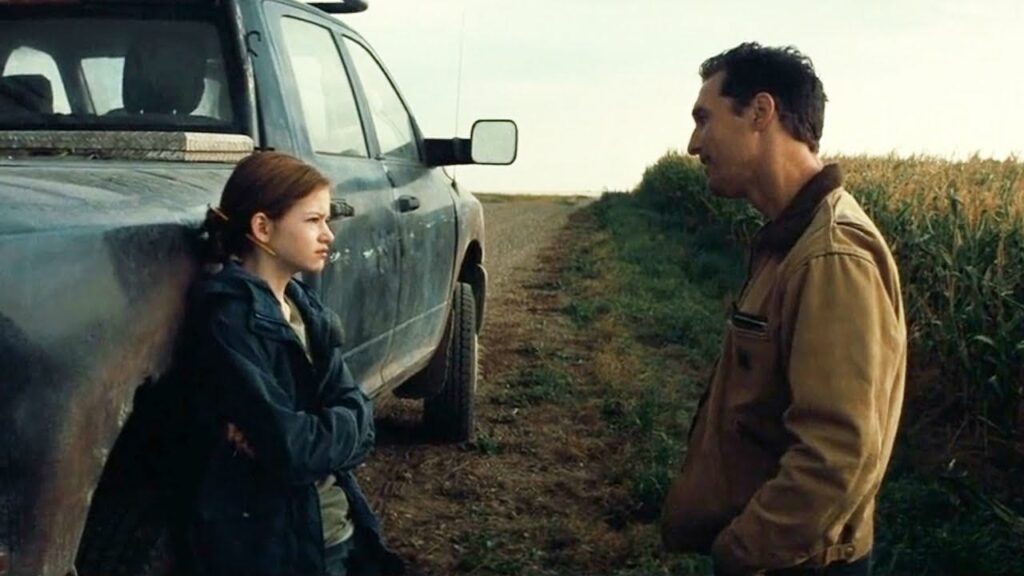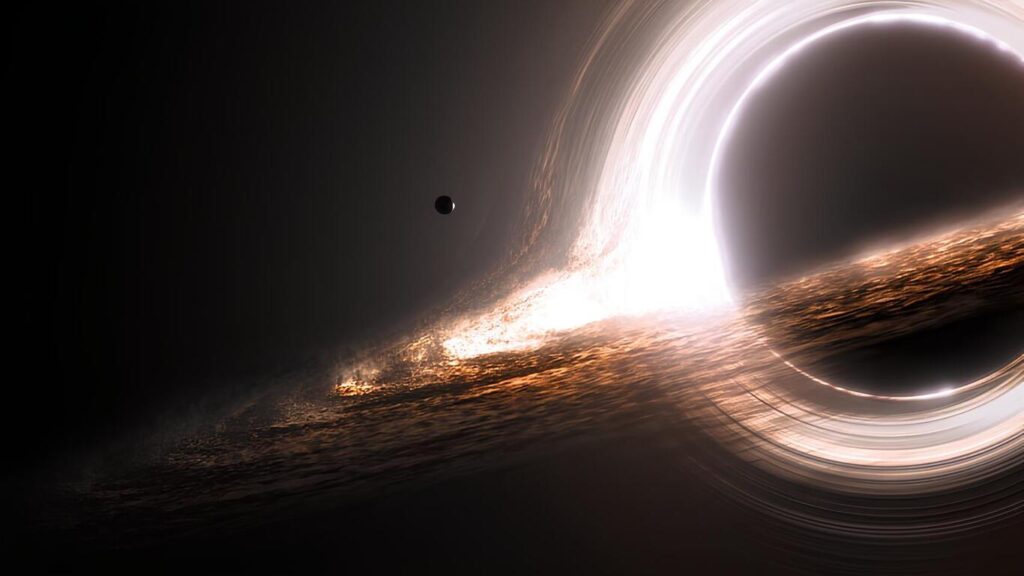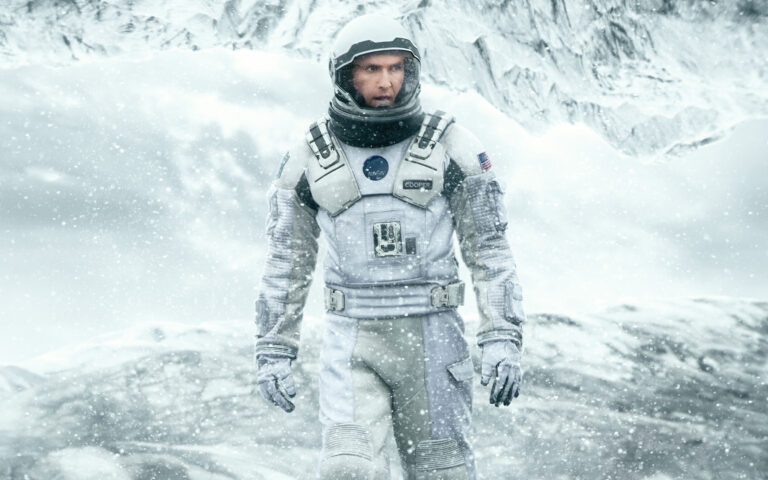In the year 2014, cinema witnessed something familiar yet entirely unprecedented with Christopher Nolan’s ‘Interstellar.’ While space epics such as Star Trek and Star Wars have long captured the entire globe’s attention, none so far have done something to explain the endless void of our Universe. Hyperspace travel, binary sunset, everything that has been made before captures the true essence of science fiction. Yet, we know Nolan and how he made Interstellar. But the credit when it comes to the execution of showing the true shape of a black hole, it all goes to Dr. Kip Thorne, who later won a Nobel Prize in Physics for his extraordinary contribution to ‘The Science of Interstellar.’ The film boldly intertwines the most intimate human emotions with some of the most complex scientific ideas, and at its heart, it tells the story of a father and his daughter separated by unimaginable distances, while also inviting audiences to explore the ideas behind wormholes, relativity, and black holes.
The film begins on a future Earth in decline, where food is running out, due to frequent dust storms known as the ‘Blight’, and humanity is slowly suffocating. Joseph Cooper (Matthew McConaughey), who is a former pilot turned farmer, is pulled into a desperate NASA mission. That too accidentally. His daughter Murphy encounters a ‘Ghost’ that is telling her something in Morse code. But it was Cooper who realized that it wasn’t Morse but Binary. They quickly unfold that these are coordinates to a place unknown. They trespassed only to get caught by someone or something he thought was long gone.
Across Planets and Black Holes, a Father Faces the Brutal Reality of Time, Loss, and the Survival of Mankind

At the opening scene of the movie, we see Copper having a nightmare based on his real-life experience, where he was training to be an astronaut but failed. And keeping that scenario in mind, it slowly unfolds that the place he once trained hard for will come back running unknowingly. In this timeline, NASA ceased to exist as a government, yet faith had other plans and brought Cooper and his science-loving daughter under the umbrella of the greatest mind of mankind. This segment haunted him, even after all these years. Now he meets his old supervisor, Dr. Brand, played by Michael Caine, and his daughter, Dr. Amelia Brand, played by Anne Hathaway, and they discover the truth, which is unforgiving. NASA has sent astronauts into a wormhole that suddenly appeared one day, and discovered potential habitable planets and got data.
Dr. Brand explains to Cooper the importance of this mission and urges him to go with them. He agrees with a heavy heart, leaving his young daughter under his guidance, while he accompanies the young Amelia along with Romily and Doyle. His role was to lead a team through a wormhole near Saturn in search of a new home for the species. The heartbreak of this separation is not a subplot but the emotional foundation of the entire story. Nolan constantly reminds us that the survival of humanity comes at a very personal cost, and that is measured in years lost between a father and child.
The film’s science is not window dressing. Kip Thorne ensured that every element, from the way light bends around a wormhole to the ticking passage of time near a black hole, was as accurate as current physics could allow. Unlike most science fiction, which often takes shortcuts for spectacle, Interstellar leans into realism. The wormhole is not shown as a tunnel, but as a perfect sphere distorting the stars around it, and it is exactly how Einstein’s equations predict. The black hole, known as Gargantua, is perhaps the most scientifically faithful depiction in cinema. Thorne provided the equations for how light would behave around a spinning black hole, and the resulting visuals were so precise that they generated peer-reviewed research. Years later, when the Event Horizon Telescope revealed the first real image of a black hole, the similarity to Interstellar’s Gargantua was uncanny.
The plot itself becomes a demonstration of physics in action. For example, Miller’s Planet, an ocean world orbiting dangerously close to Gargantua, presents a dilemma that has caused all the astronauts’ good years of their lifetime. The ocean planet’s time slows to a crawl, and Hans Zimmer, the person behind scores of Interstellar, added the sound effect of a clock ticking, which depicts an hour on the surface equals seven years on Earth. This is not a fanciful exaggeration but a direct consequence of Einstein’s general relativity, which is dramatized to devastating effect. And in that process, they lost Doyle. When Cooper and his team return to orbit, they find that 23 years have passed, and Romily has turned old. His emotions were brutal as he said that he waited years, all by himself. Imagine living inside a space module for 23 years, even hypothetically; it sounds maddening, as he reconciles the years he has spent watching helplessly as time slipped away. Few films have so vividly shown how abstract physics can tear into human lives.
The story does not stop at what science already knows. They later debate between the resources they have and the time they have. Cooper’s son, Tom, who was played by Timothe Chalament, speaks of Donald, their grandfather, who has died and was buried next to Cooper’s wife and his own son. In the end, Tom says that he thinks he is dead somewhere in space and needs to let go of him. Hysterically crying, Cooper sees his screens black out only to find out that his daughter Murphy has sent him a video saying that she is his age now, and she wants him to come back. She is now all grown and working as a theoretical physicist under Dr. Brand.
Later, they venture into Dr. Mann’s planet only to realise it was a dud made out of frozen gas. Romily dies, while Mann escapes into space. Mann tries to dock on the main ship only to fail and die in the process. In this scene, Cooper uses his flying skills and tilts his head to the other side so that he doesn’t lose consciousness due to the extreme G-Force. It was a subtle hint showing the intense training a pilot has to go through, while Brand lost her conscience as she had no clue about it. And this is where things turn interesting.
Gravity Transcends Science as Cooper Communicates Across Time to Guide His Daughter and the World

The Murphy Law has layers that venture into speculation, particularly when Cooper plunges into Gargantua and redirects Brand into Dr. Desmond’s planet. Instead of dying in the crushing gravity, he enters a tesseract, which is a five-dimensional construct created by unknown beings. Within this space, time becomes physical, which is a landscape that can be navigated, shaped, manipulated, and even time-traveled. Cooper realizes he can reach into Murphy’s past, using gravity to send her the data she needs to solve the equations that allow humanity to escape Earth. And this is exactly where he realises that he was the one who called them all into the space; it was he who guided his old self to make this event possible. It was an endless loop in time. This merging of higher-dimensional theory with the simplest human act, where a father reaches out to his daughter, via a watch that he left behind, is the film’s emotional and intellectual climax.
Kip Thorne’s fingerprints are all over this sequence. While no one knows what actually happens inside a black hole, the idea that gravity could bridge dimensions is drawn from speculative physics. Nolan does not present it as certain, but as one of many scientific possibilities, grounding even the most abstract parts of the film in legitimate thought experiments.
The ending is bittersweet, as Cooper ventures into the wormhole, where he sees his space shuttle and his crew, all together. He reaches out to Brand, which was a scene that was shown initially, where she expresses it as a first handshake. He later drifts into space, exiting the wormhole, and awakens aboard a vast space station orbiting Saturn, named Cooper Station after his daughter, not himself. He reunites with Murphy, who is now old, and has lived her entire life while he remained frozen in time. Their reunion is brief but deeply moving. Murphy urges him to leave again, and this time to find Amelia, who continues humanity’s future on another planet.
Hans Zimmer’s score, built around the resonance of church organs, gives the film an almost spiritual atmosphere. It underscores the vastness of space, the crushing weight of time, and the hope that love might endure even across dimensions. But of course, Interstellar is not without its flaws, as its dialogue can feel heavy with exposition, and its ending pushes the boundaries of plausibility.
But its ambition was unmatched. Few films attempt to merge Einstein’s relativity with the raw pain of separation, or to show how black holes and wormholes could coexist with love and sacrifice. Thanks to Nolan’s vision and Thorne’s uncompromising science.




